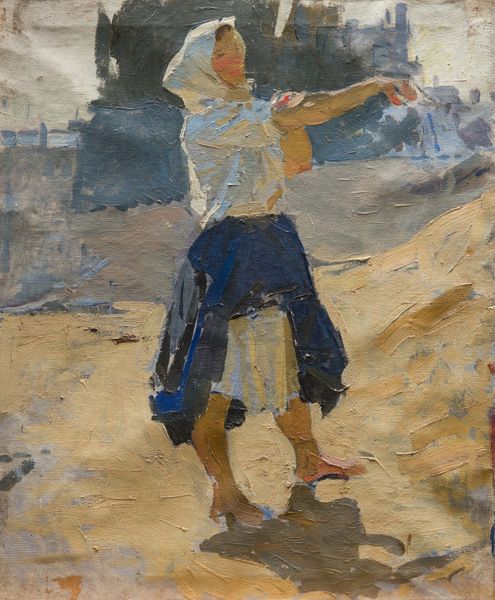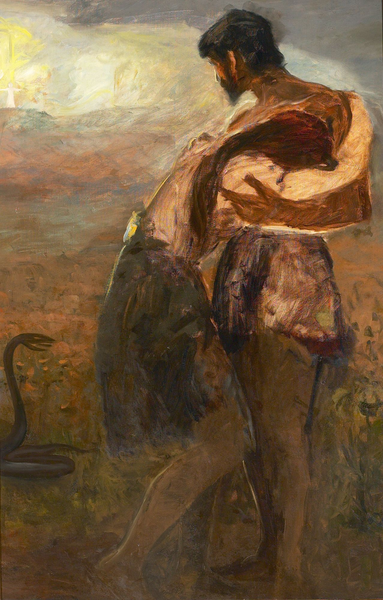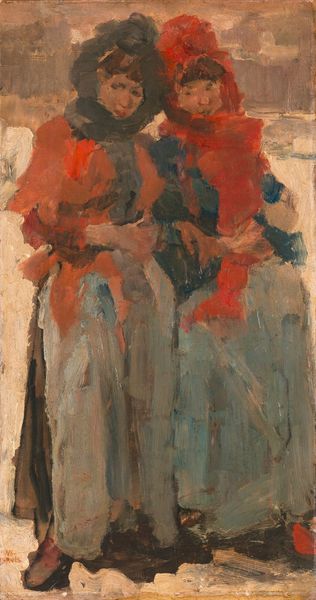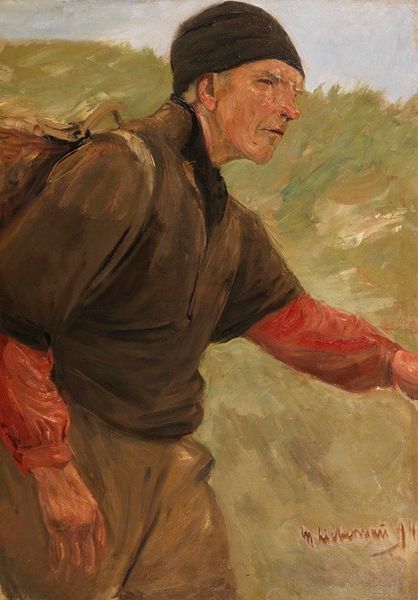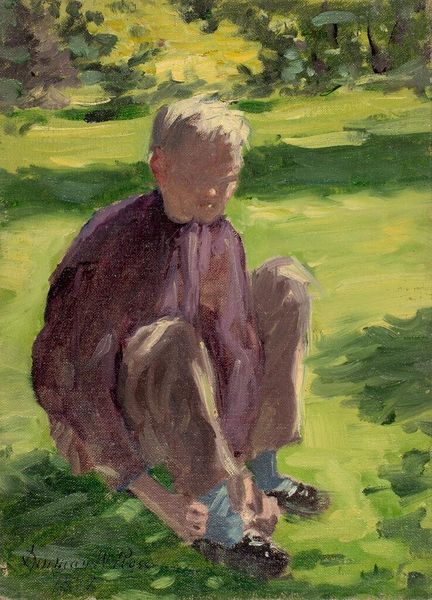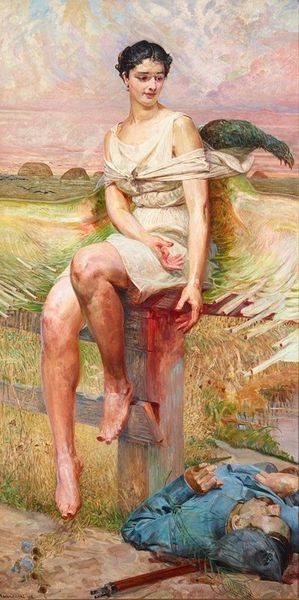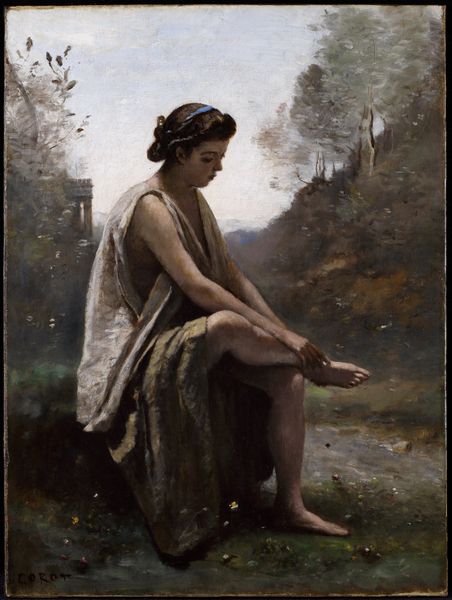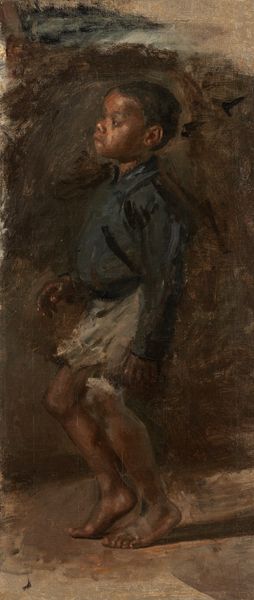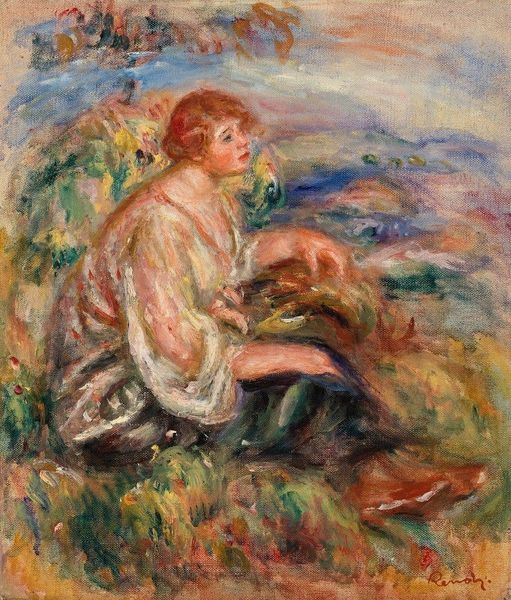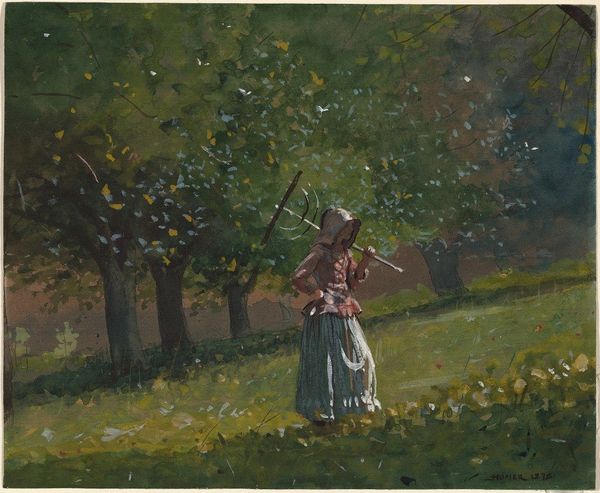
Copyright: Public domain
Curator: What strikes me first about this small oil-on-canvas work is the immediacy and vibrant energy emanating from it. Editor: Ah yes, the work we are looking at today is "The Hoe (sketch for Springtime)" painted by Jules Breton in 1902. Curator: The artist's signature brushwork certainly directs your eye, drawing you into a structured field that is lush and brimming with promise, almost vibrating. Editor: Breton, known for his realist paintings of rural life, created this as a preliminary study for a larger work. This provides an interesting window into his working process; consider what his choice of materials and techniques conveys about rural labor, contrasting his process with that of the worker. Curator: I see how the structure invites that kind of reading. What jumps out at me is how the formal arrangements speak to a universal experience that extends beyond the field. Look at the woman's stance. How it reflects both fatigue and quiet resilience. There is great dignity here. Editor: Her placement in the landscape, her clothing; how is this connected with prevailing notions of femininity? Breton clearly frames labor with sensitivity. This connects strongly with broader political discourses of the late 19th, early 20th century. What did it mean to show workers with respect during a period of increased urbanization and industrialisation? Curator: That is where our opinions seem to intersect in regard to the meaning held within its structure. Despite what she might represent to us today, consider also her symbolic placement in this fertile terrain. As a symbol of growth. Editor: It's interesting to consider how a seemingly straightforward depiction engages with far-reaching societal developments in agriculture and the shift in demographics. Curator: In studying this composition, it's striking to see the harmonious dialogue of shapes. Even her bent position is echoed and contrasted in that dynamic sky above her head. I noticed something new just now. Thanks! Editor: Indeed, understanding an artist’s process and the labor involved allows us to appreciate this piece on a much more profound level. Thank you!
Comments
No comments
Be the first to comment and join the conversation on the ultimate creative platform.

